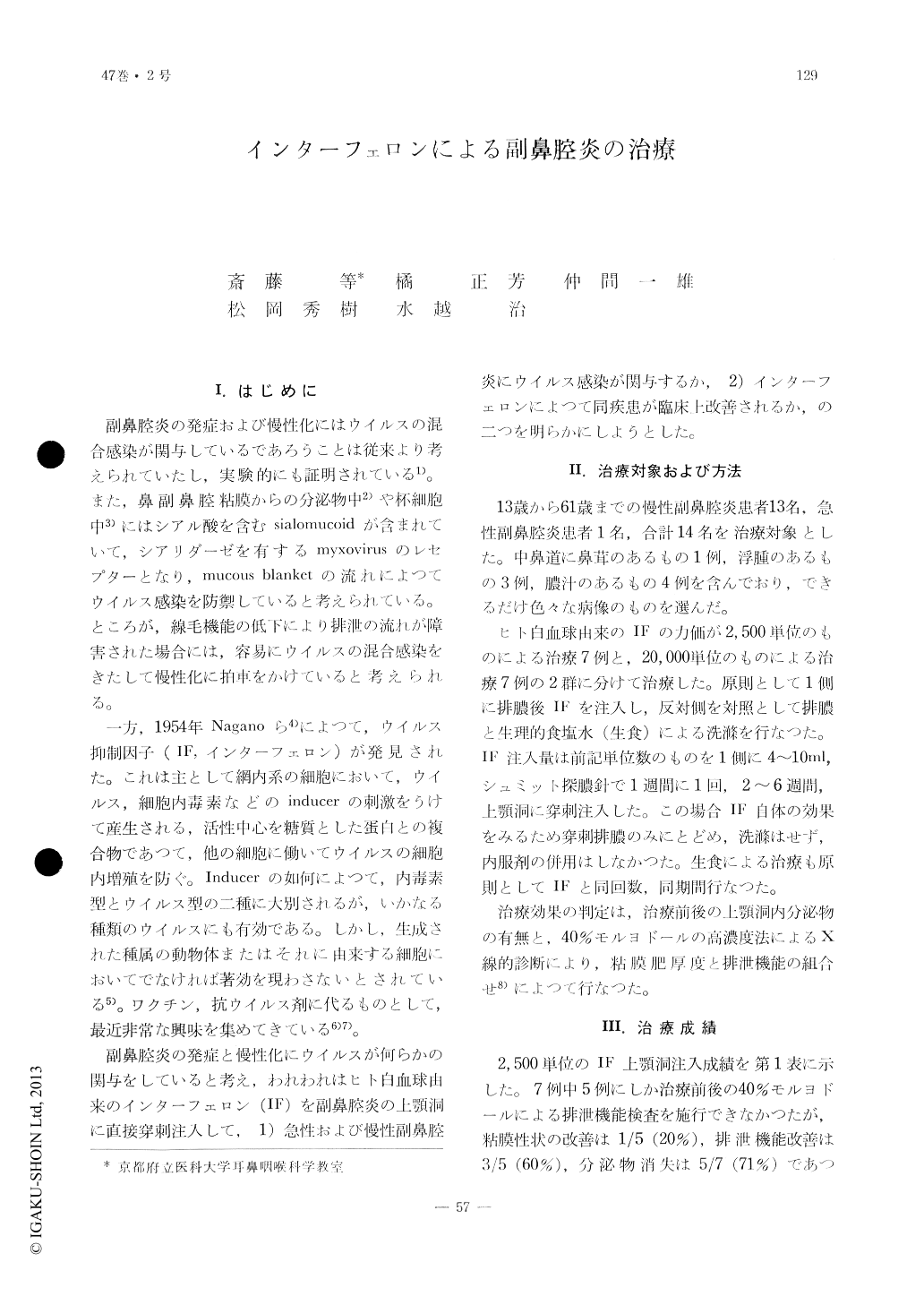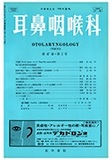Japanese
English
- 有料閲覧
- Abstract 文献概要
- 1ページ目 Look Inside
I.はじめに
副鼻腔炎の発症および慢性化にはウイルスの混合感染が関与しているであろうことは従来より考えられていたし,実験的にも証明されている1)。また,鼻副鼻腔粘膜からの分泌物中2)や杯細胞中3)にはシアル酸を含むsialomucoidが含まれていて,シアリダーゼを有するMyxovirusのレセプターとなり,mucous blanketの流れによつてウィルス感染を防禦していると考えられている。ところが,線毛機能の低下により排泄の流れが障害された場合には,容易にウイルスの混合感染をきたして慢性化に拍車をかけていると考えられる。
一方,1954年Naganoら4)によつて,ウイルス抑制因子(IF,インターフェロン)が発見された。これは主として網内系の細胞において,ウイルス,細胞内毒素などのinducerの刺激をうけて産生される,活性中心を糖質とした蛋白との複合物であつて,他の細胞に働いてウイルスの細胞内増殖を防ぐ。Inducerの如何によつて,内毒素型とウイルス型の二種に大別されるが,いかなる種類のウイルスにも有効である。しかし,生成された種属の動物体またはそれに由来する細胞においてでなければ著効を現わさないとされている5)。ワクチン,抗ウイルス剤に代るものとして,最近非常な興味を集めてきている6)7)。
Interferon was instilled directly into the maxillary sinus by puncture in 14 cases of acute and chronic sinusitis. In oder to evaluate the effect. the sinus on one side was treated with interferon, while the other with saline solution as a control. The patients were tested by sinus x-ray and the amount of nasal discharge, both, before and after the treatment. In 8 cases, improvement was seen with lessening of discharge on the treated side. However, 2 case out of the 8 showed no difference than that which was treated with saline solution. The true effect of interferon was, therefore, noted only in 6 cases.
In one case improvement was noted by the decrease in the thickening of the mucous membrane lining.
Interferon, however, was not effective to such cases with severe chronic sinusitis that surgical treatment is indicated.

Copyright © 1975, Igaku-Shoin Ltd. All rights reserved.


